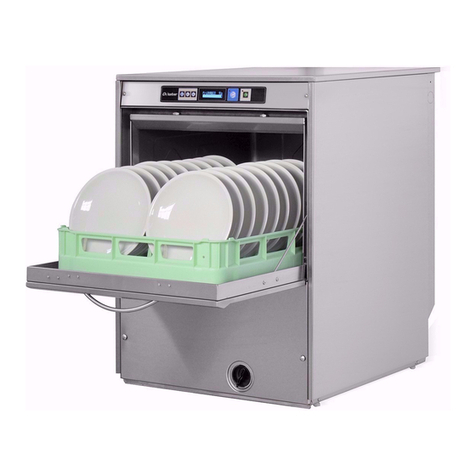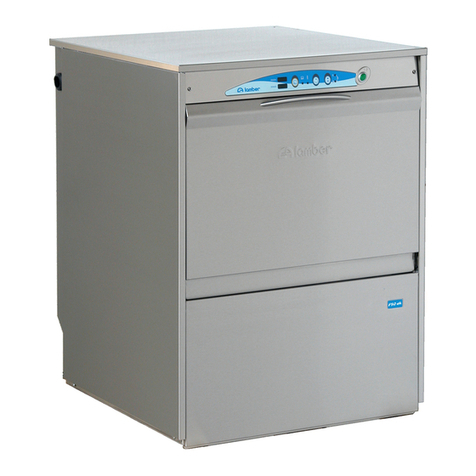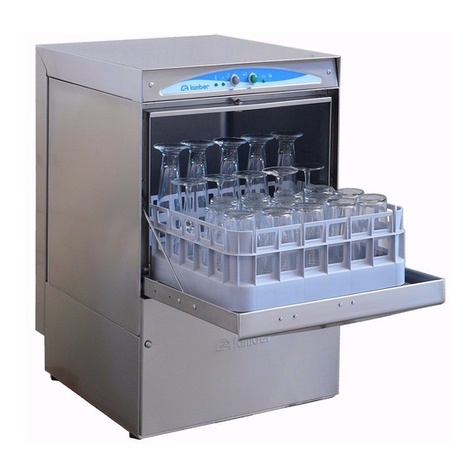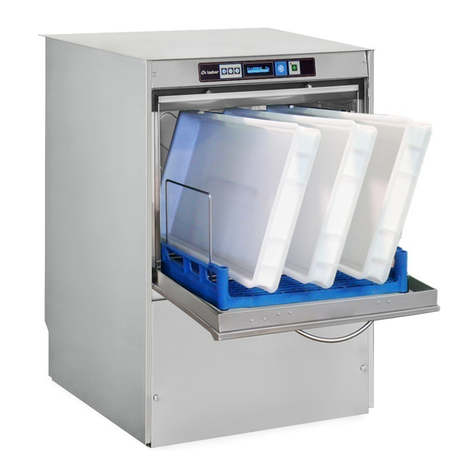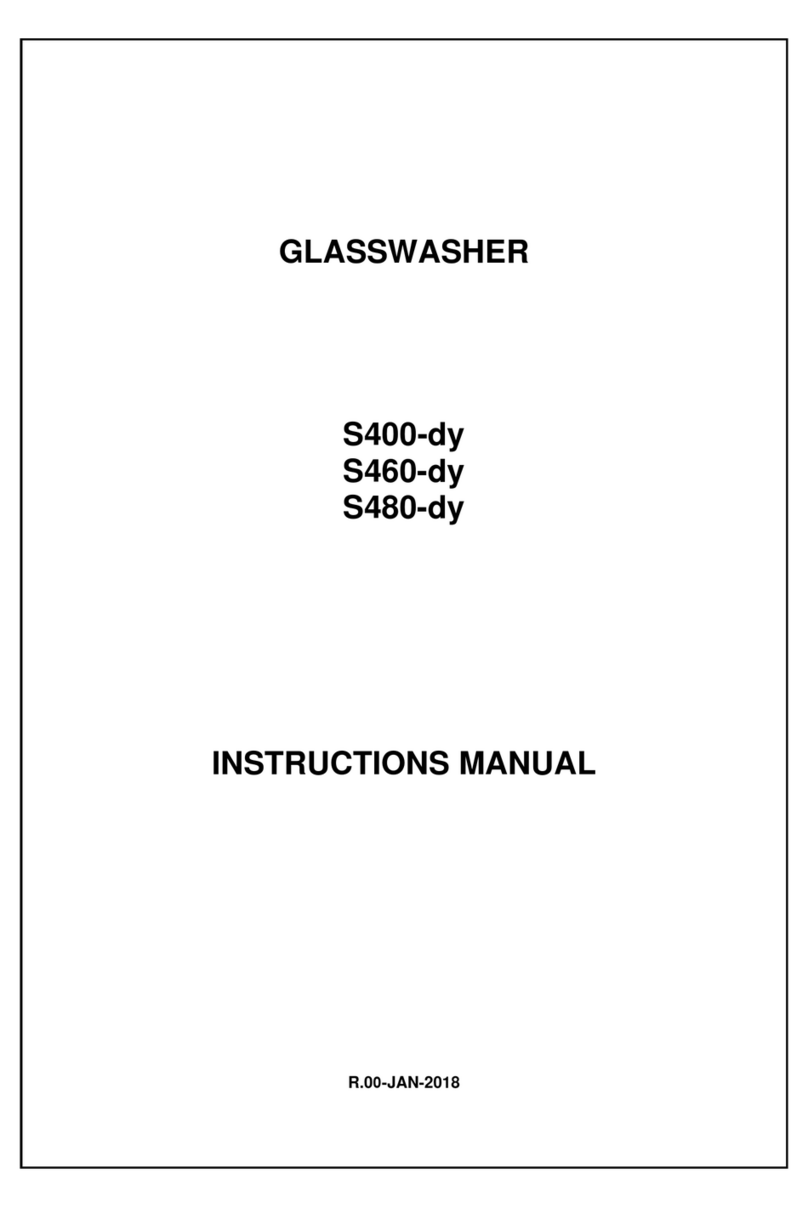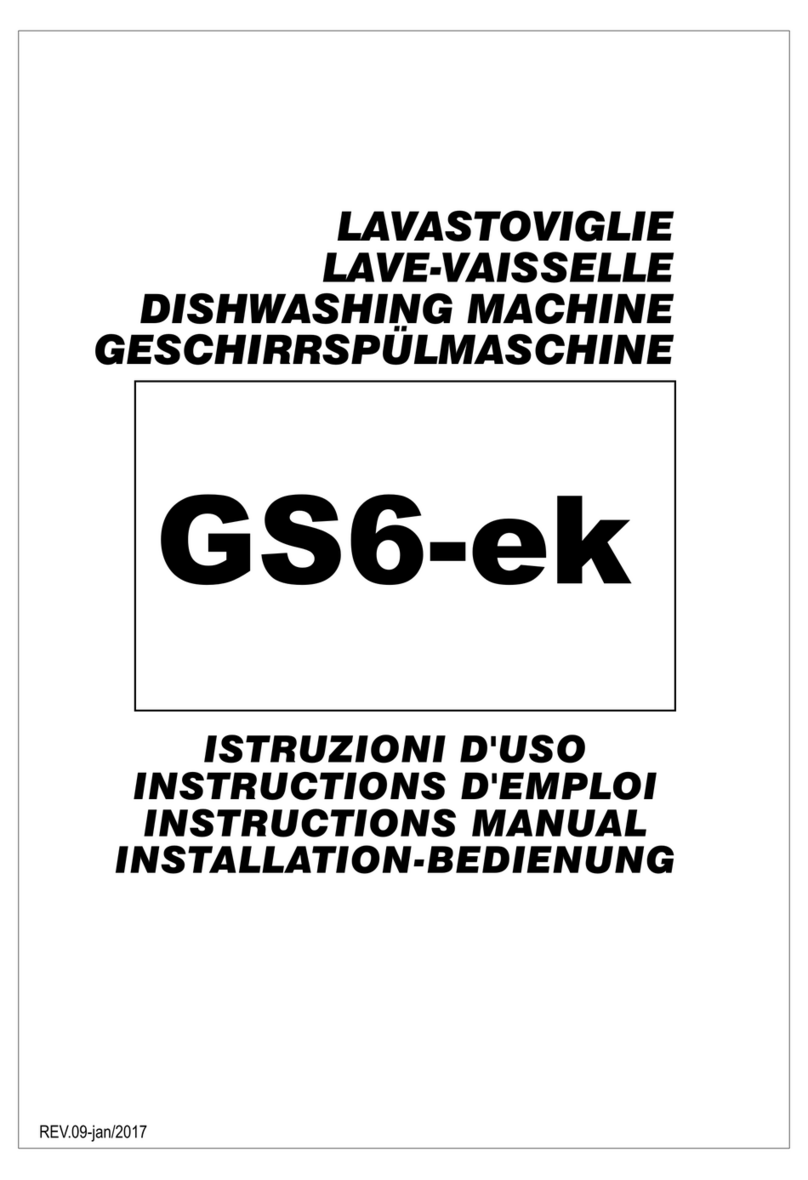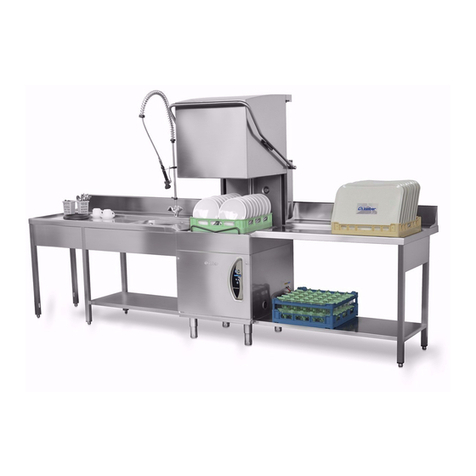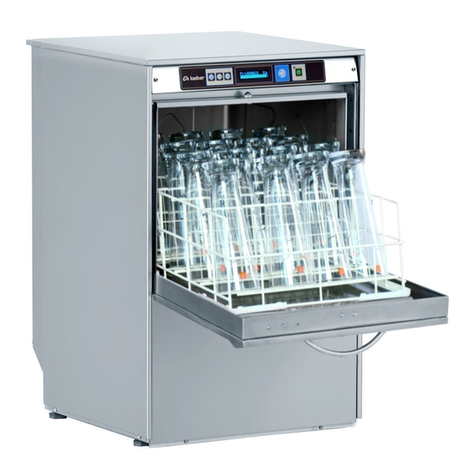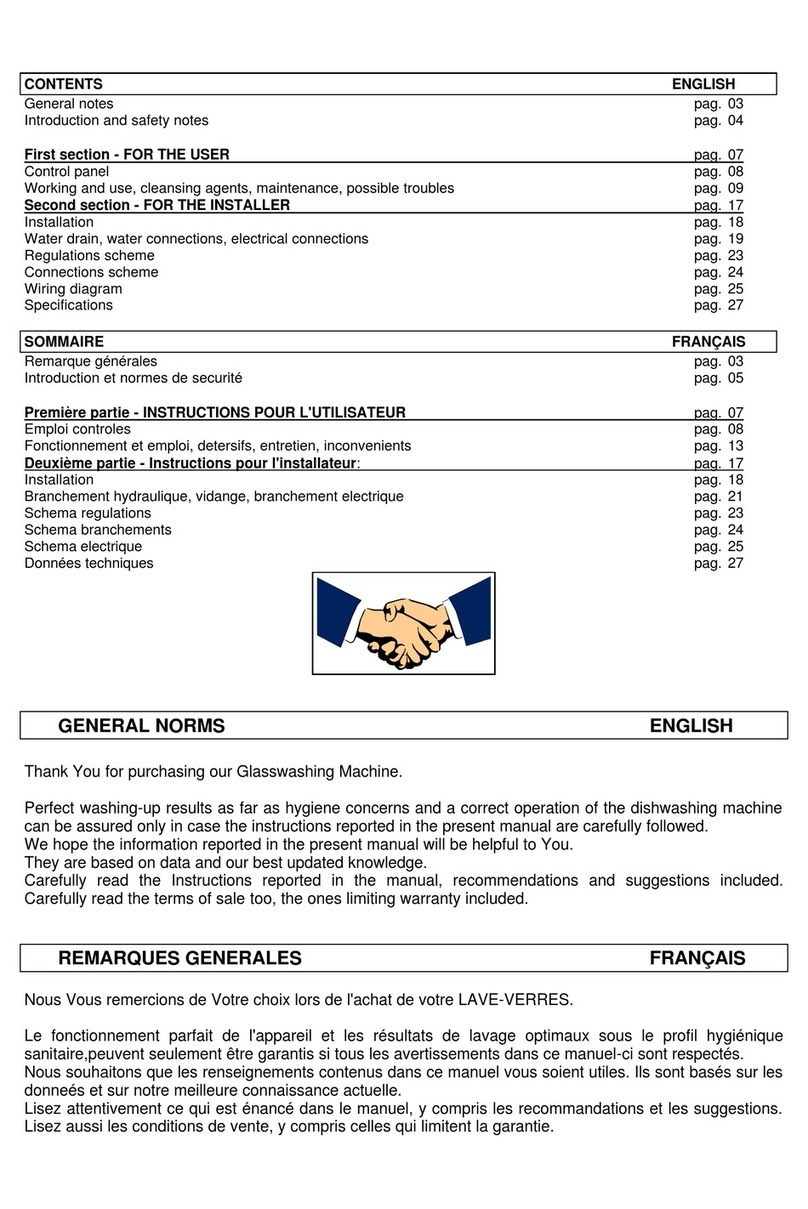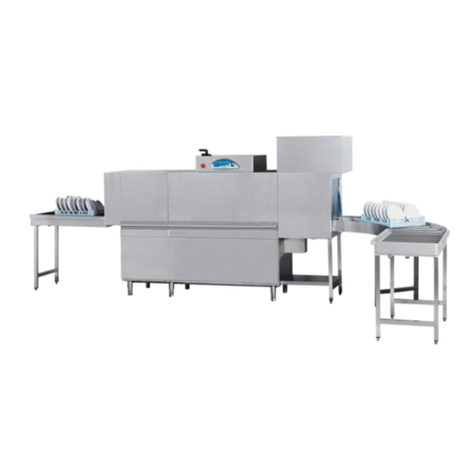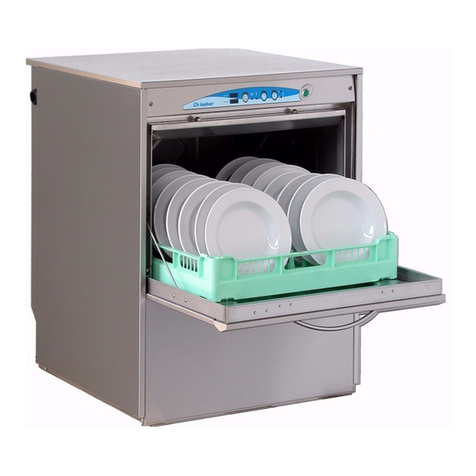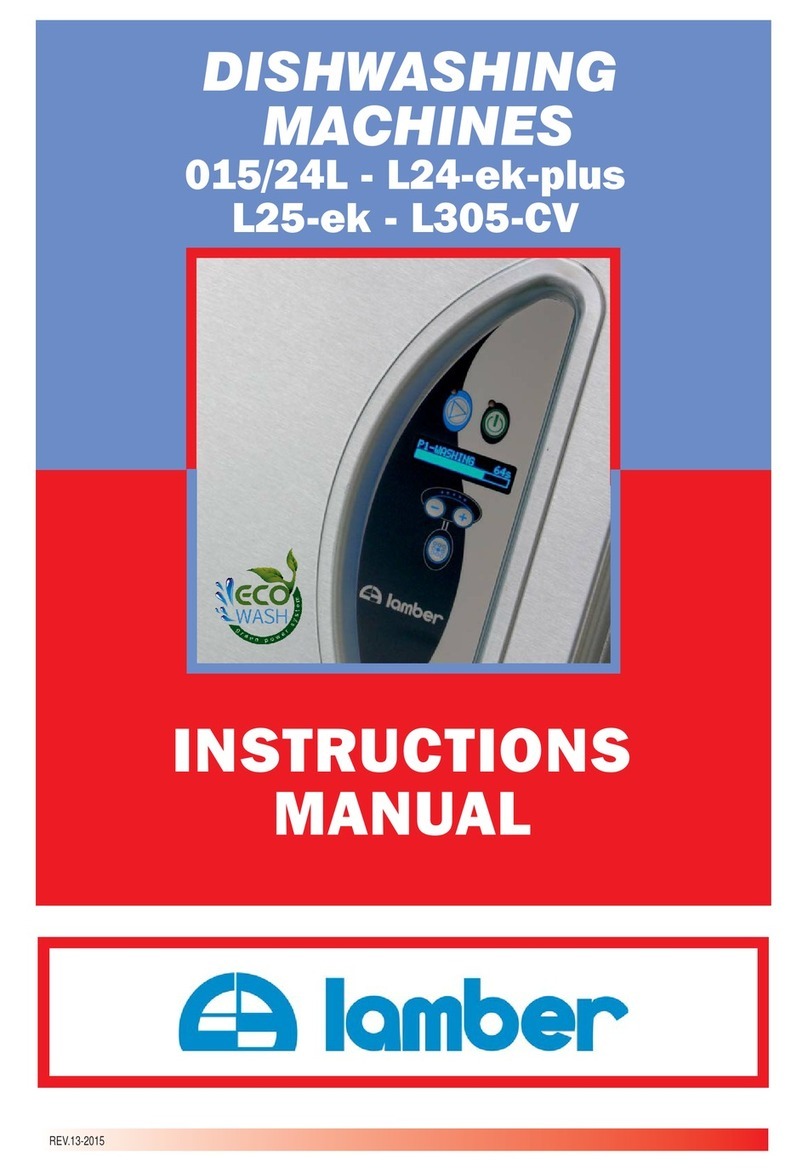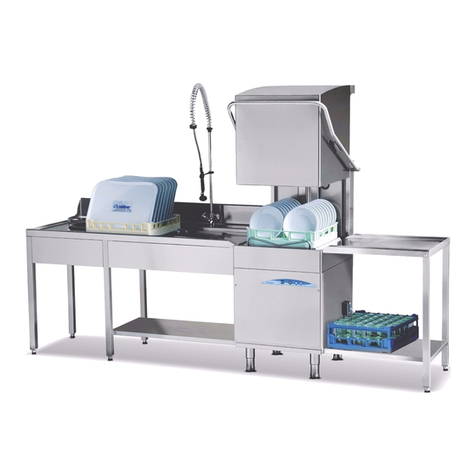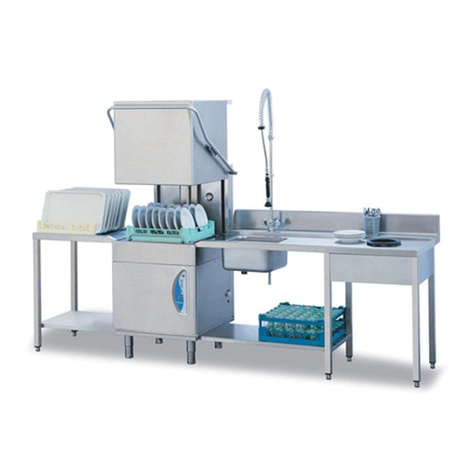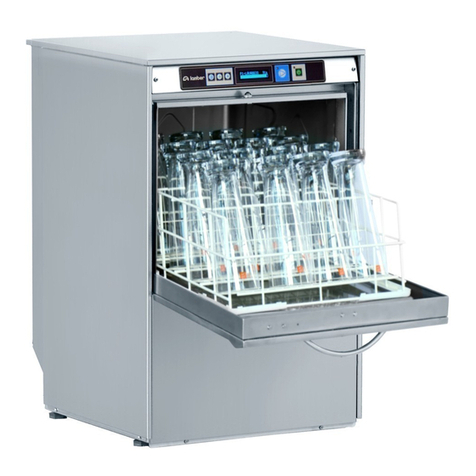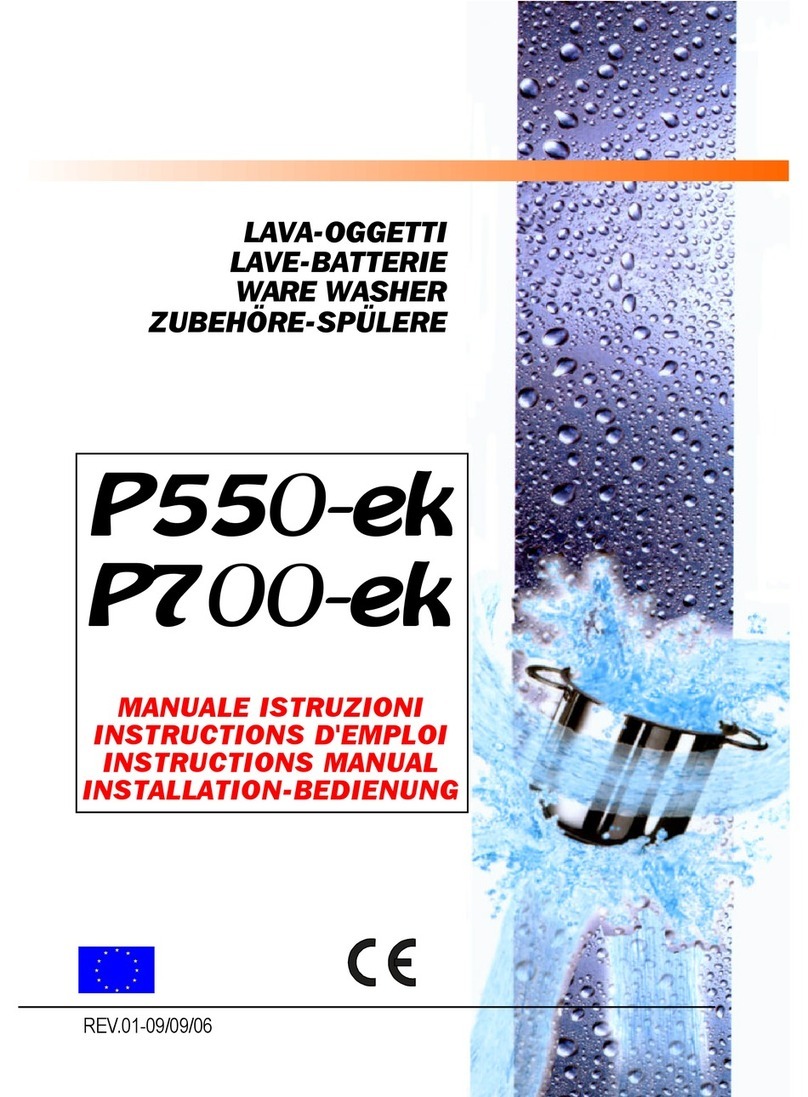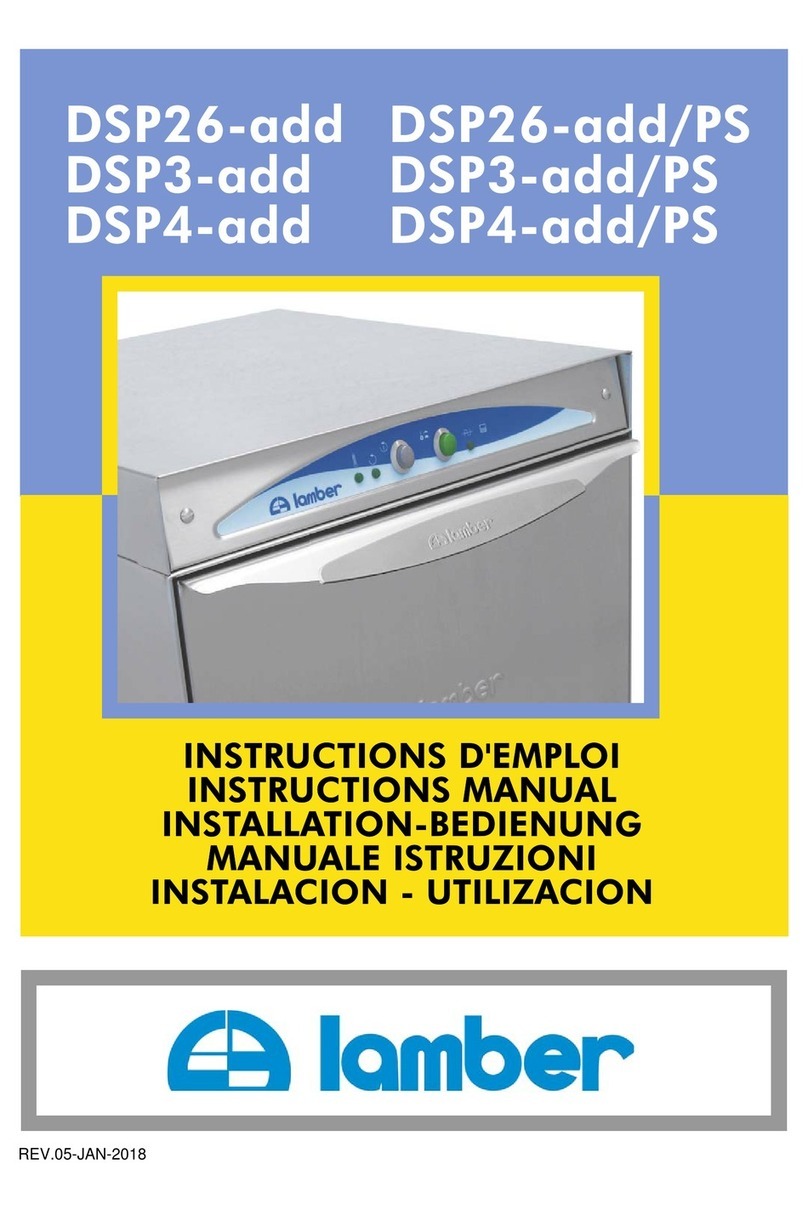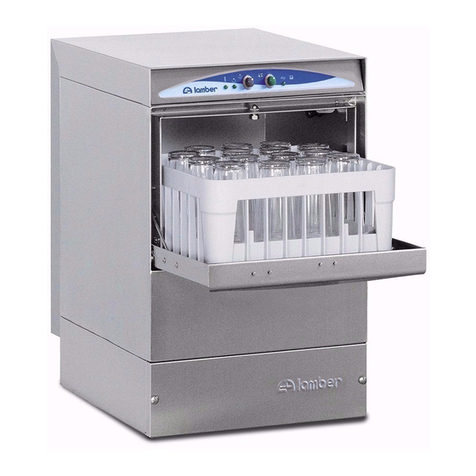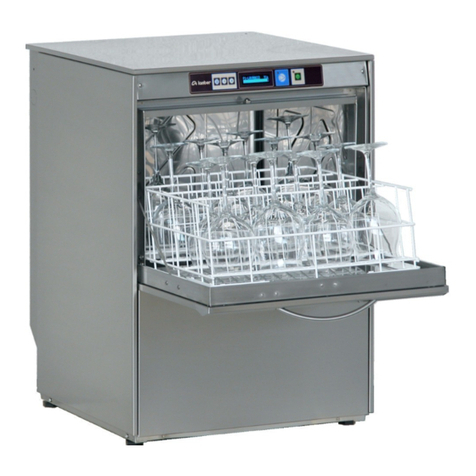DECLARATION OF CONFORMITY
The following :
LAMBER snc di Affaba F. e C. – Via Italia 6 – 26855 Lodi Vecchio (LO) ITALY
Declare under our responsibility that:
Apparatus:
DISHWASHER WITH PULL THROUGH RACK
Trademark:LAMBER
Manufacturer :LAMBER mod. M115 / M115-AS
matr……………..
for which this declaration refers to the conformity of the following standards:
Safety of household and electrical appliances - General requirements EN60335-1(2002) + A1/A11(2004), A12 (2006) + A2 (2006)
+ + A13 (2008) + A14 (2010) + A15 (2011)
Safety of household and electrical appliances - Part 2^ Particular requirements for commercial electric dishwashing machines
EN60335-2-58 (2005) + A1 (2008) + A11 (2010).
Household and similar electrical appliances – Electromagnetic fields – Measurement methods for electromagnetic fields of
household appliances and similar apparatus with regard to human exposure EN 62233:(2008)
Limits and methods of measurement of radio disturbance characteristics of electrical motor-operated and thermal appliances for
households and similar purposes, electric tools and similar electric apparatus - EN 55014-1–1(2006) + A1 (2009)
Limits for harmonic current emissions (equipment input current
16 A per phase) - EN 61000-3-2(2006) or >16A and
75A + A2
(2005) EN 61000-3-12(2005)
Limitation of voltage fluctuations and flicker in low-voltage supply systems for equipment with rated current
16 A. EN 61000-3-
3(2008) o >16A e 75A EN 61000-3-11(2000)
Immunity requirements for household appliances, tools and similar apparatus. Product family standard EN 55014-2(1997) +
A1(2001) + A2 (2008)
Safety of machinery Basic concepts, general principles for design - Basic terminology, methodology-ISO 12100-1 (2009).
Safety of machinery - Basic concepts, general principles for design - Technical principles-ISO 12100-2 (2009).
on the basis of what is foreseen by the Directives:
2004/108/CE, 2006/42/CE.
2004/108/EC, 2006/42/EC.
We decline any responsability for injuries or damage derived from machine misuse, abuse by others or improper machine maintenance or repairs.
(date) li 01/01/2013
The administrator
technical file case manager : Ing Roberto Affaba
address : via italia 6 – 26855 – Lodi Vecchio (LO) Italy
